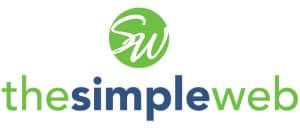Grackle Docs løsninger for dokument- og webtilgjengelighet
Fullserviceleverandøren av digital tilgjengelighet
GrackleDocs Inc. er en ledende leverandør av programvare og tjenester som gjør digitalt innhold tilgjengelig for alle, uavhengig av funksjonsevne.
La oss hjelpe organisasjonen din med å nå sine mål for digital tilgjengelighet med vårt robuste utvalg av produkter og tjenester.

Tilgjengelighetsløsninger for Google Workspace
Grackles arbeidsområdeMed verktøyene våre kan du enkelt teste enkeltfiler eller filer på hele nettstedet for å sikre samsvar.
En one-stop-shop for universell utforming av nettsteder
Web-revisjonAUDIT er GrackleDocs' hybride tilnærming til webtilgjengelighet, med manuell og automatisert samsvarsrevisjon og overvåking av nettsteder.
Komplette tjenester for dokumentsanering
PDF-saneringVåre opplæringsverktøy hjelper deg med å gjøre dokumentene og den digitale tilstedeværelsen din tilgjengelig.
Millioner av dokumenter har allerede blitt Grackled!
Et lite utvalg av det våre fornøyde kunder har å si om GrackleDocs

Det enkle nettet
Grensesnittet i Grackle Docs viser dokumentets tilgjengelighetsfeil og veileder deg i hvordan du retter dem. Prosessen er svært enkel, slik at du kan lage en tilgjengelig PDF med et enkelt klikk på en knapp.
Etter å ha eksportert over 250 tilgjengelige PDF-filer i løpet av en måned med Grackle Docs, er jeg imponert og lettet over å ha et så fantastisk tillegg til Google Docs. De ansatte hos Grackle Docs svarer raskt, grundig og høflig på supportforespørsler.
Region 10 ESC
Som en ideell utdanningsorganisasjon med begrensede budsjetter var vi på utkikk etter en rimelig løsning for å implementere Web Content Accessibility Guidelines (WCAG) 2.0 for G Suite-utdataene våre og oppfylle kravene til OCR-samsvar.
Vi fant ikke noe annet som fungerte like godt, og heller ikke så billig, som Grackle Suite for å hjelpe oss med å utbedre Google Docs, Sheets og Slides. Studentene mine som jeg underviser i universell utforming (ansatte i Region 10) liker det og synes det er enkelt å lære og bruke. Jeg anbefaler Grackle på det varmeste.

Columbus State University
Kjære Grackle-team, vi er så takknemlige for at dere tar kontakt for å dele Grackle-produktserien. Ved Columbus State University anbefaler vi ofte GrackleDocs til fakultetsmedlemmer som forbereder kursinnhold til nettbaserte kurs.
Utformingen gjør det enkelt og oversiktlig å løse tilgjengelighetsproblemer. Når et problem oppdages, viser grensesnittet en lenke til hvor problemet befinner seg og hvordan det kan løses. Deretter er det bare å sjekke på nytt. Det er så enkelt å bruke! Vi gleder oss til å prøve det ut med alle Googles produkter. Takk igjen!

Foreningen for førerhunder i Lyon
Organisasjonen vår tilbyr gratis førerhunder til synshemmede for å hjelpe dem med å navigere på egen hånd.
Men til tross for iherdig innsats har vi ikke klart å lære hundene våre å lese. Så for å produsere dokumenter som er tilgjengelige og lette å lese for mottakerne våre, assosierer vi hunden med en harr.
Dette er en svært brukervennlig løsning i vårt Google Workspace-miljø. Avkastningen på investeringen er svært god, og kombinasjonen av Google Docs og Grackle fungerer utmerket.
